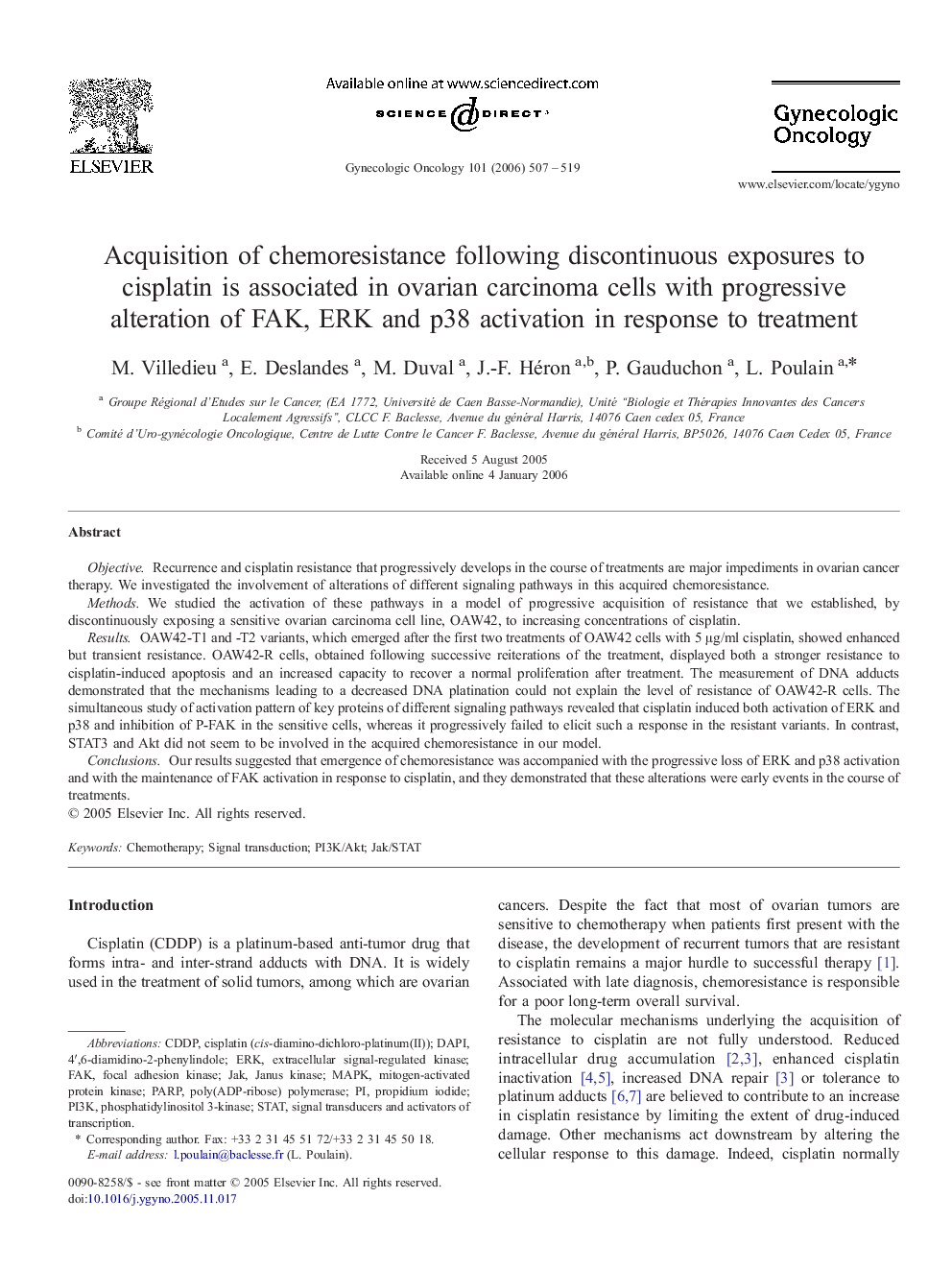| Article ID | Journal | Published Year | Pages | File Type |
|---|---|---|---|---|
| 3943964 | Gynecologic Oncology | 2006 | 13 Pages |
Objective.Recurrence and cisplatin resistance that progressively develops in the course of treatments are major impediments in ovarian cancer therapy. We investigated the involvement of alterations of different signaling pathways in this acquired chemoresistance.Methods.We studied the activation of these pathways in a model of progressive acquisition of resistance that we established, by discontinuously exposing a sensitive ovarian carcinoma cell line, OAW42, to increasing concentrations of cisplatin.Results.OAW42-T1 and -T2 variants, which emerged after the first two treatments of OAW42 cells with 5 μg/ml cisplatin, showed enhanced but transient resistance. OAW42-R cells, obtained following successive reiterations of the treatment, displayed both a stronger resistance to cisplatin-induced apoptosis and an increased capacity to recover a normal proliferation after treatment. The measurement of DNA adducts demonstrated that the mechanisms leading to a decreased DNA platination could not explain the level of resistance of OAW42-R cells. The simultaneous study of activation pattern of key proteins of different signaling pathways revealed that cisplatin induced both activation of ERK and p38 and inhibition of P-FAK in the sensitive cells, whereas it progressively failed to elicit such a response in the resistant variants. In contrast, STAT3 and Akt did not seem to be involved in the acquired chemoresistance in our model.Conclusions.Our results suggested that emergence of chemoresistance was accompanied with the progressive loss of ERK and p38 activation and with the maintenance of FAK activation in response to cisplatin, and they demonstrated that these alterations were early events in the course of treatments.
